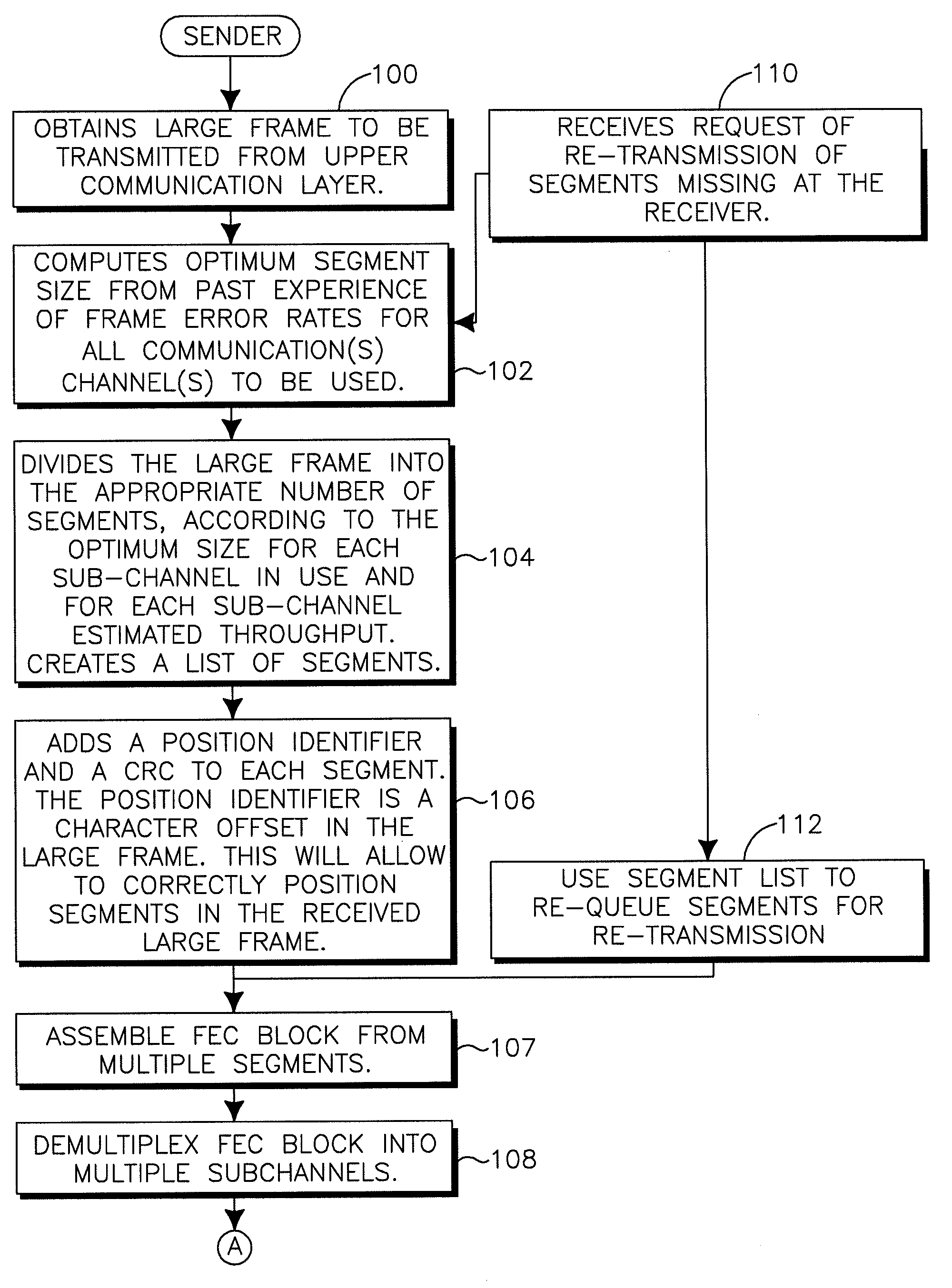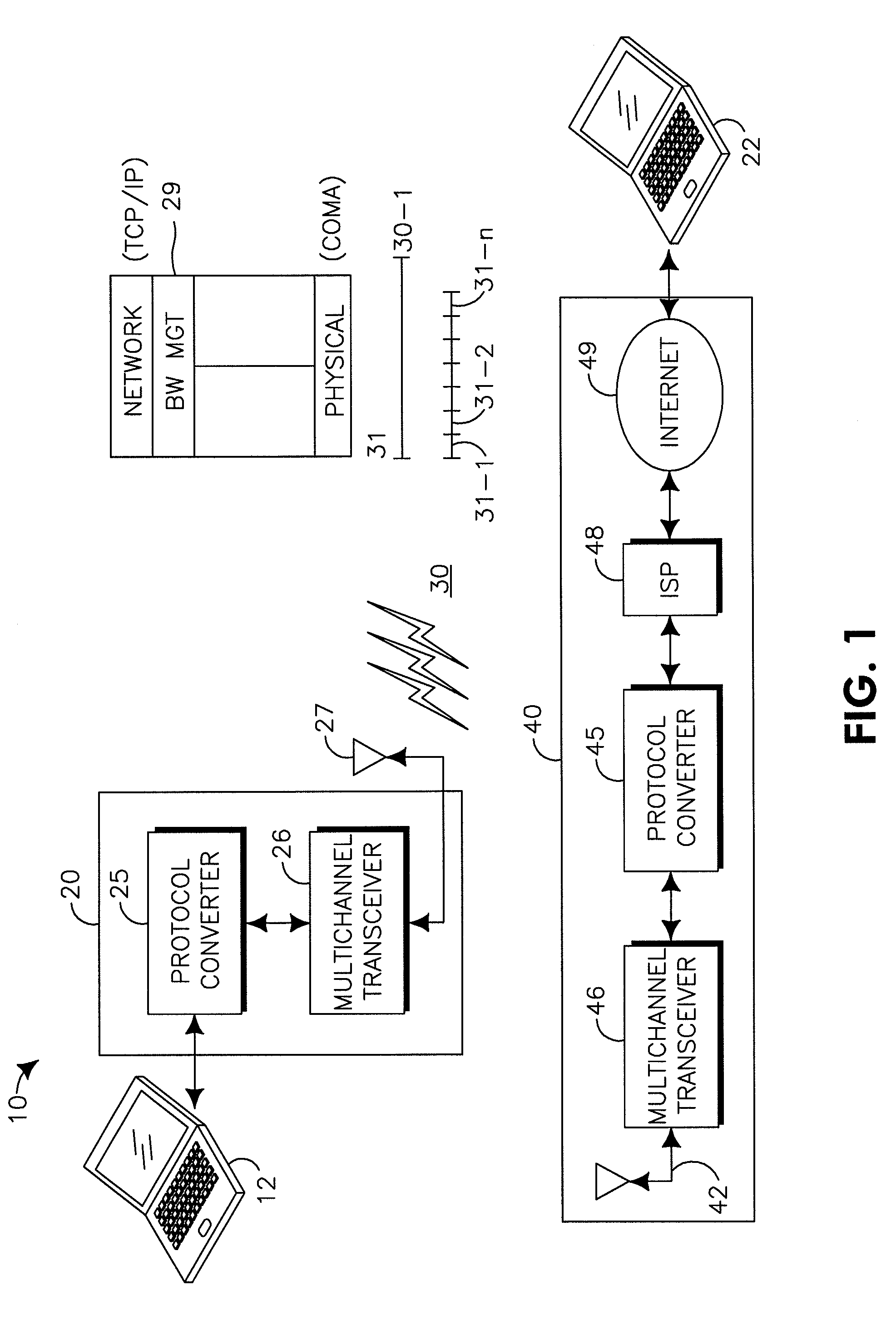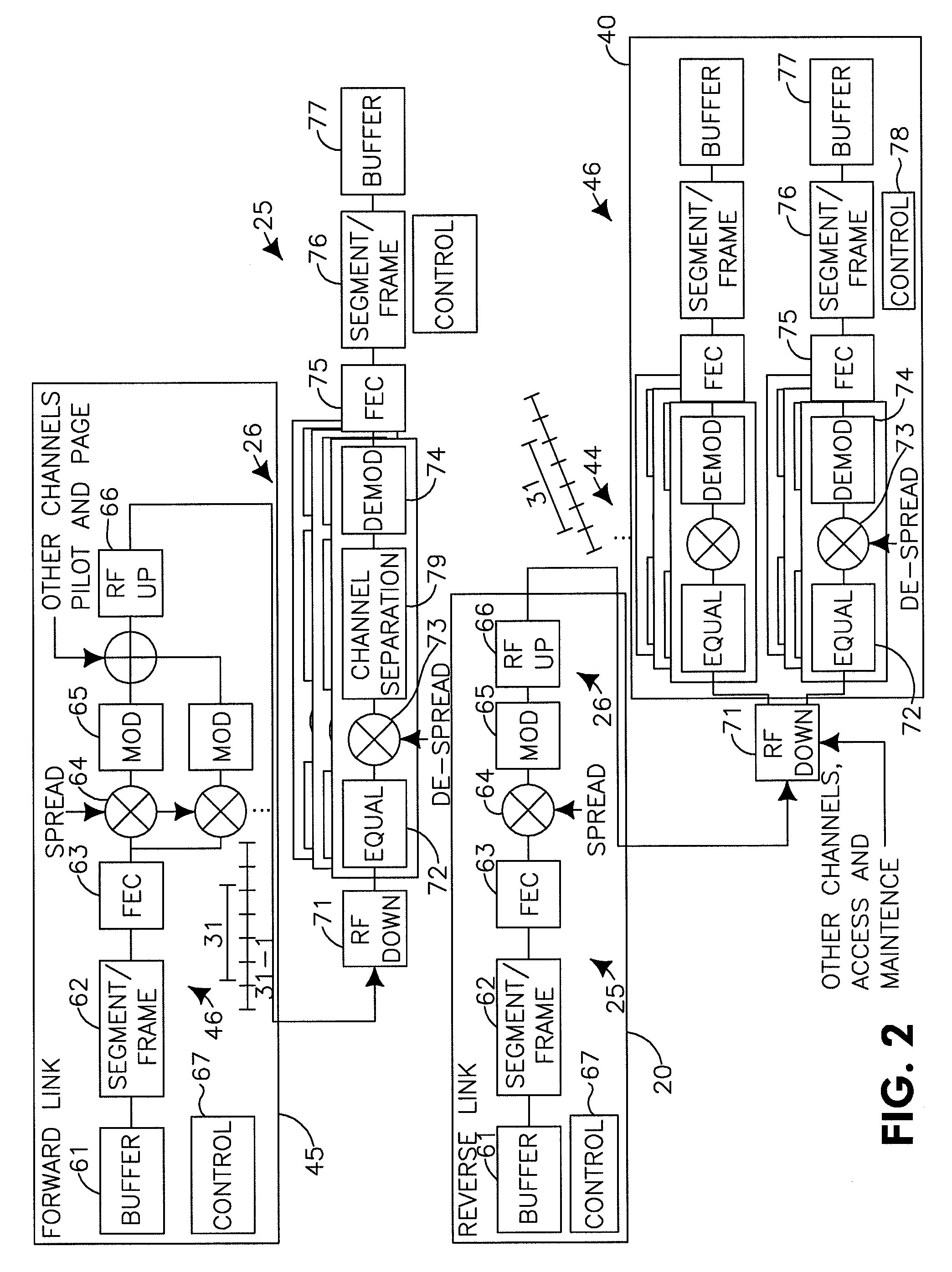Variable rate forward error correction for enabling high performance communication
- Summary
- Abstract
- Description
- Claims
- Application Information
AI Technical Summary
Benefits of technology
Problems solved by technology
Method used
Image
Examples
Embodiment Construction
[0031]Turning attention now to the drawings more particularly, FIG. 1 is a block diagram of a system 10 for providing high speed data communication service according to the invention. The system 10 consists of a remote subscriber unit 20, multiple bidirectional communication links 30, and a local or service provider unit 40.
[0032]The subscriber unit connects to terminal equipment 12, such as a portable or laptop computer, hand held personal digital assistant (PDA), or the like. The subscriber unit 20 includes a protocol converter 25 which in turn provides data to a multichannel digital transceiver 26 and antenna 27.
[0033]The protocol converter 25 receives data from the computer 20, and together with appropriate hardware and / or software, converts it to a format suitable for transmission such as in accordance with known communication standards.
[0034]The protocol converter 25 implements an intermediate protocol layer that coverts the data to a format appropriate for use by the multicha...
PUM
 Login to View More
Login to View More Abstract
Description
Claims
Application Information
 Login to View More
Login to View More - R&D
- Intellectual Property
- Life Sciences
- Materials
- Tech Scout
- Unparalleled Data Quality
- Higher Quality Content
- 60% Fewer Hallucinations
Browse by: Latest US Patents, China's latest patents, Technical Efficacy Thesaurus, Application Domain, Technology Topic, Popular Technical Reports.
© 2025 PatSnap. All rights reserved.Legal|Privacy policy|Modern Slavery Act Transparency Statement|Sitemap|About US| Contact US: help@patsnap.com



